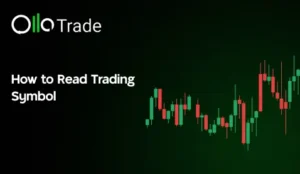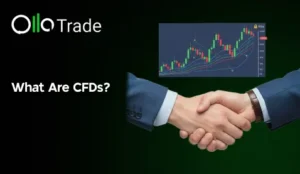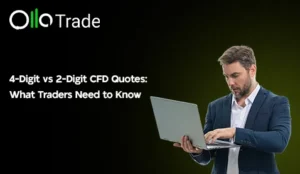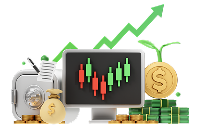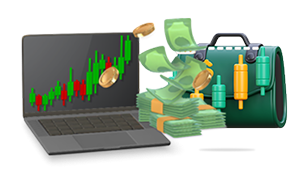In 2025, trading has become more dynamic, fast-paced and accessible than ever before. The right trading software will shape your entire experience; whatever you’re a retail investor who’s testing the water or a pro navigating complex positions. With markets running 24/7 and tools evolving rapidly, relying on outdated or clunky platforms just doesn’t cut it anymore.
This article is your guide to the best trading software available in 2025, practical, honest, and tailored to how real people trade. We’ll explore tools that suit different trading styles, highlight features like online trading applications, trade simulators, and stock market graph tools, and help you figure out which platform fits your routine best.
What Makes Great Trading Software in 2025?
In simple terms, trading software is your digital command center that helps you to buy and sell financial assets like stocks, currencies and commodities right from your computer or phone. For beginners, it’s like having a GPS that helps you navigate the stock market. Most newcomers look for software that’s easy to use, with clean layouts and one-click actions.
On the flip side, professional traders often lean toward platforms packed with advanced tools like lightning-fast execution, custom indicators, and complex charting capabilities. But whether you’re just starting out or already knee-deep in market data, good trading software in 2025 should check a few universal boxes: it needs to be user-friendly, secure, fast, and offer smart charting tools that help you spot trends before they go mainstream.
How to Choose the Right Online Trading Applications?
Picking the right online trading application is complex. Whether you’re a beginner dipping your toes in the market or a seasoned trader chasing precision, choosing the wrong app can throw a wrench in your routine. Here’s how to find the one that clicks with your style.
1. Test the Platform with a Demo Account
Before you commit, take the app for a test. Most reputable online trading applications offer demo accounts where you can trade with virtual money. It’s risk-free and incredibly helpful to get a feel for the layout, order execution, and speed.
Pro tip: Use the demo in a way you use the real thing. Don’t just poke around, simulate your real trading behavior. That’s where you’ll notice the pros and cons.
2. Check for Extra Features That Match Your Style
Look for strong visuals if you enjoy charts. You cannot compromise on mobile responsiveness if you trade while on the go. Some apps come packed with handy perks like:
- Real-Time Alerts
- Integrated News
- AI Suggestions
It’s not always necessary, but they sure make a difference when they match your taste.
3. User Reviews and Expert Takes
User reviews can reveal common glitches or hidden gems, so don’t ignore them. Expert opinions give you the technical rundown. It is ideal if you’re looking for long-term reliability. But keep your eyes open. Not all reviews are created equal. Look for ones that feel honest and mention things like UI experience, order speed, and app stability.
4. Think Ahead: Will This App Grow for You?
Choose an app that offers room to grow with advanced charting, multi-asset trading, or integration with platforms like MT 4. Look for online trading applications that won’t force you to jump ship once you level up. Time, money, and frustration are all reduced with a platform that grows with your abilities.
Why Do Trade Simulators Matter Before Going Live?
Trade simulators are like training wheels for your trading journey; you get to ride without the fear of falling flat on your face. Whether you’re a total beginner or a seasoned trader testing a new strategy, it gives you a real feel for the market without touching your real money. It helps you understand how price moves, how fast things can change, and how your decisions play out all in a zero-risk environment.
It’s the ideal setting for novices to pick up the basics, make mistakes, and gain confidence without breaking the bank. Pros, on the other hand, use simulators to fine-tune strategies or adapt to new market conditions. Tools like MT 4 (MetaTrader) demo accounts offer near-real market conditions, helping you sharpen your edge before going live.
Evolution of the Stock Market Graph in Modern Trading Software
From scribbles on notepads to sleek and interactive visuals on our screens, the stock market graph has come a long way. Back in the day, traders relied on hand-drawn charts and gut instincts, but today we’re looking at real-time graphs packed with powerful tools and data. The game is now entirely different thanks to modern trading tools.
Now, with just a few clicks, from casual retail traders to seasoned pros, anyone can spot trends, set alerts, and run technical analyses that once took hours. These advanced graphs don’t just look pretty; they help you see the market pulse in milliseconds. Making quick and smart decisions feels less like gambling and more like strategy. What was once only available to big institutions is now right at your fingertips and making things fairer for everyone.
Conclusion
In 2025, trading is for anyone with the right tools and mindset. Whether you’re just starting out or already deep in the game, the best trading software meets you where you are and grows with you. From intuitive online trading applications to realistic trade simulators and smart stock market graph tools, today’s platforms are built to make trading sharper, faster, and more human.
Discover robust trading tools with OLA Trade to confidently begin your trading career right now.



